|
PEALE - WASHINGTON AT PRINCETON - PAGE 4
|
Oannes
Mesopotamian Creation |
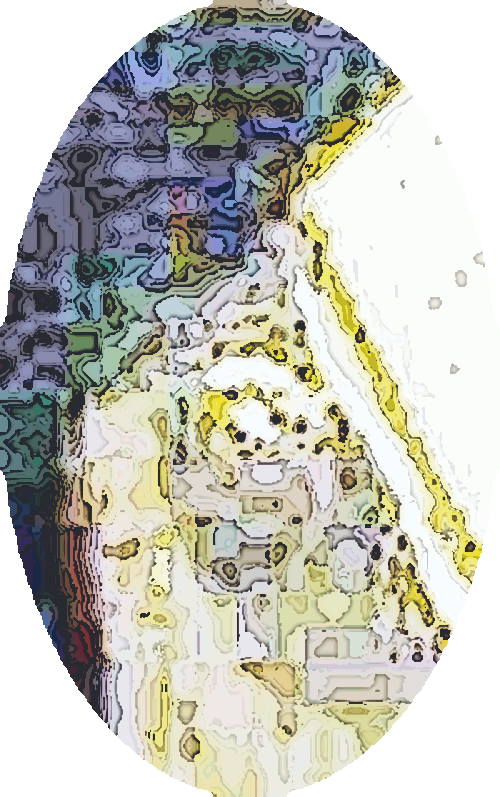
Fish-man |
-
Oannes (Oan) was the name of a Babylonian god, who, in the first year of the foundation of Babylon, is said to have come out of the Persian Gulf, or the old Erythtaean Sea,
next to Babylon.
- He was also found in Sumerian, Chaldean and
Mesopotamian mythologies.
- In Mesopotamian mythology, Oannes
was an amphibious being who taught mankind wisdom.
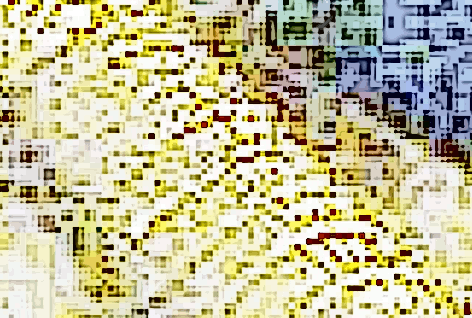
Cuneiform scripts |
- The primary sources of
Oannes' history came from cuneiform scripts in Mesopotamia and ancient Greek sources.
-
Narrative style and elements in the Oannes story imply that the script dated back to Sumerian period.
- Apart from cuneiform scripts, the only existing ancient source about Oannes is the work of Berossus.
|
Although the period in which this work was written in Greek is a controversial issue, it is very likely that it was written between 290 and 278 BC. However, the work of Berossus did not reach the present day, and it was Alexander Cornelius Polyhistor (100 - 36 BC) who helped transfer Oannes narrative.
(Ercüment Yıldırım)
|
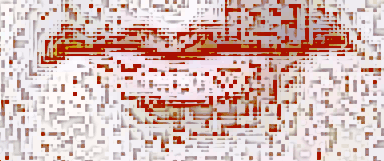
Historian
|
- Berossus, astronomer and priest of the god Bel, the Akkadian name for
Marduk an important deity of Babylon, wrote three books on the history and culture of
Babylonia; although only fragments of his writings remain.
- He was one of the most important members of the clergy in the Great Esagila Temple in Babylonia.
-
Berossus was well known to historians of his day, as well as those who came later, and was mentioned in
many accounts.
- His work, titled Babyloniaka, explained the traditions and origins of the civilization which
he gathered from the archives (walls) of the Temple of Bel, in
present day Syria.
|
The culture-myth on which the account of Berossus rests has not yet been found in Babylonian literature, but there are numerous indications in hymns and incantations that confirm the indentification with Ea, and also prove the substantial correctness of the conceptions regarding Oannes-Ea as given by Berossus.
(theodora.com)
|

Creation myth |
- Oannes is said to have taught humans the Sumerian
creation myth, the Enūma Eliš.
- In succeeding Akkadian mythology Oannes was known as Ea
and also as Enki (Haya).
- Oannes was the name given by the Babylonian writer Berosus and preserved by Eusebius
in the works of Alexander Polyhistor and Apollodorus.

Babylonian flood
myths |
- The Atra-Hasis tablets, named for Atra-Hasis (exceedingly wise), include both a cosmological creation myth and
is the oldest of three surviving Babylonian flood myths
dating to (1646–1626 BC).
-
Tablet I of Atra-Hasis contains the creation myth of Anu, Enlil, and Enki
who are the Sumerian gods of sky, wind, and water.
- Sumerian legend
shows that Enki had his beginnings in the ocean.
- In later versions of the flood story, contained in the Epic of Gilgamesh and the
Eridu Genesis, the hero is not named Atra-Hasis.
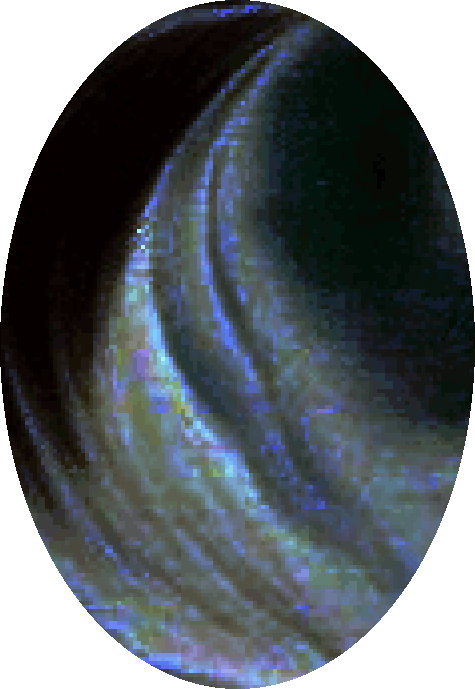
High water |
- The Gilgamesh flood myth is a flood myth in the Epic of Gilgamesh.
- It is one of three Mesopotamian Flood Myths alongside the
Eridu Genesis, and an episode from the Atra-Hasis Epic.
- Gilgamesh's
historical reign is believed to have been approximately 2700
BC, shortly before the earliest known written works.
|
While on a subsequent archeological expedition to Nineveh in Iraq,
George Smith found on May 7, 1873 a portion of a tablet containing the missing part of the flood story, describing the provisioning of the ark: "Into the midst of it thy grain, thy furniture, and thy goods, thy wealth, thy woman servants, thy female slaves...the animals of the field all, I will gather and I will send to thee, and they shall be enclosed in thy door.
(Wikipedia)
|
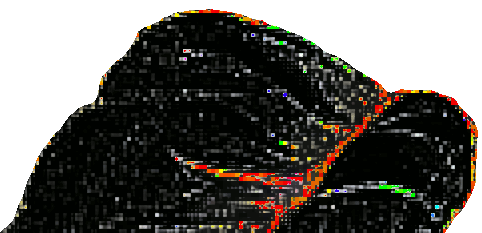
The Anunnaki senior
gods sitting in
thirst and hunger |
- Subsequent versions of the flood myth in the Ancient Near East evidently alter,
omit and editorially change information about the flood and the flood hero found in the original Atra-Hasis story.
- For example: "The Anunnaki (the senior gods) were sitting in thirst and hunger"
was changed to "The gods feared the deluge."
|
The dropping of individual lines between others which are preserved, but are not synonymous with them, appears to be a more deliberate editorial act. These lines share a common theme, the hunger and thirst of the gods during the flood.
(Wikipedia)
|
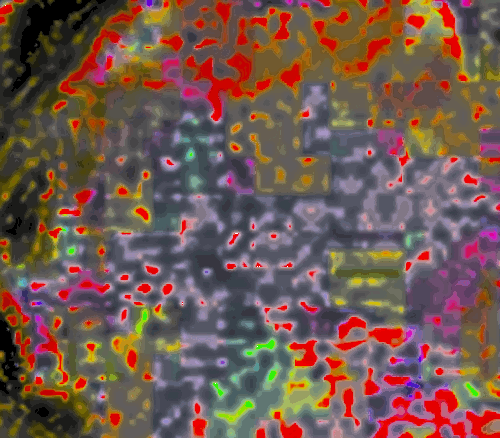
Mesopotamian garden |
- The first highly developed civilizations appeared in Mesopotamia,
where people worshiped the Anunnaki Gods.
- Mesopotamia
was the first geographical region with an urban culture centered on an agricultural lifestyle.
- These cultures had a very developed system of religious beliefs, in which the whole mass of divine beings,
who arrived from the sky, coexisted with humans.
- The most famous were the Anunnaki, a group of unusual beings led by Enki and Enlil.
|
Where are the seven sages of the primeval ocean? The sacred carp who like their master Ea. With sublime wisdom have been endowed?
(From a poem belonging to the Middle Assyrian period 1392-1056 BC)
|

Sumerian relief |
- The Sumerian historians told stories about two rivers;
the Tigris and Euphrates and the floodplains where the
civilization was born some 5,500 years ago.
- Oannes was the emissary of
Sumerian Ea, god of the freshwater deep (Apsu) and of wisdom.
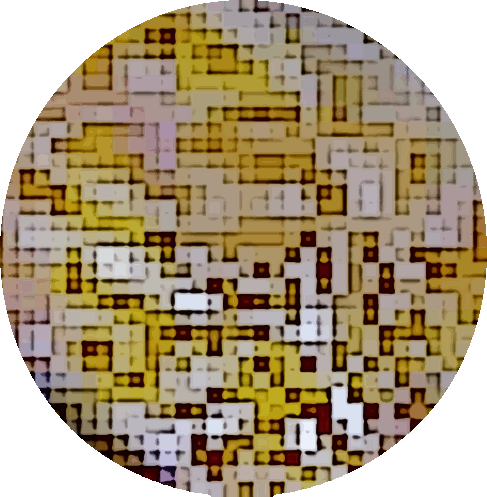
Sumerian |
- Sumerian is the name given to them by modern historians after the city of Sumer
(Shinar in Bible).
- People living in Sumer called their
god Ea Enki also known as Haya.
|
Later on referred to as Oannes/Hovannes who was known as Haya in Sumerian epic. Armenians still use both names - Hay and Hovannes, Ovannes for example in Russian. In Grabar Hovhannes was with Y- Yovannes.
(Ararat - Place Of Creation)
|
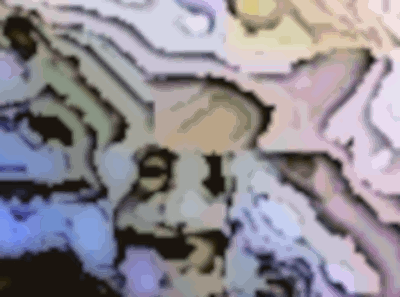
Seven Sages of
civilization |
- Oannes is associated with the Seven Sages of civilization
called the Apkallu (Abgal) who are engraved in cuneiform text
on a Babylonian tablet found at Uruk, dating 165 BC.
-
Their leader was Oannes the Wise.
- The Apkallu (Akkadian) or Abgal, (Sumerian) are seven Sumerian demigods said to have been created by the god Enki (Akkadian: Ea) to give civilization to mankind.
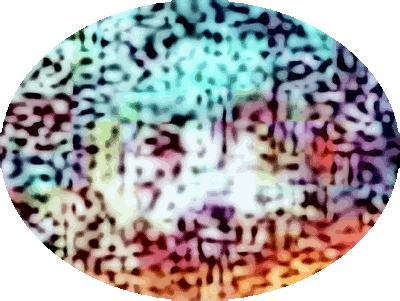
Enki advisors |
- The Apkallu served as priests of Enki and as advisors or sages to the earliest
'kings' or rulers of Sumeria before the flood.
- They have also been depicted with wings, having either a human head or an eagle's head.
- Uruk
was the ancient city of Sumer which today is called the city of Warka in Iraq.
- Some ancient texts wrote that the Apkallu landed in Sumer in
a 'flying egg.'
|
Wisdom has built her house; she has set up its seven pillars. (Proverbs 9:1)
|
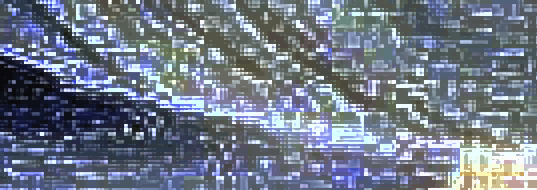
Flaming star |
- Classical authors such as Manius, Hyginus and Xanthos also
told the story of how the Apkallu came to the Earth and
hatched from an egg that had a luminous appearance on the
banks of the Euphrates River.
- Around the same time, creatures very
similar descended in a brilliant 'ark' in the area now called
Mali.
- Sozomenus, who was a 5th-century historian, wrote
that fish-like gods descended on the Euphrates and were like a
'flaming star.'
|
Apkallu reliefs appear prominently in Neo-Assyrian palaces, notably the constructions of Ashurnasirpal II of the 9th century BC. They appear in one of three forms, bird-headed, human-headed or dressed in fish-skin cloaks.
(Wikipedia)
|
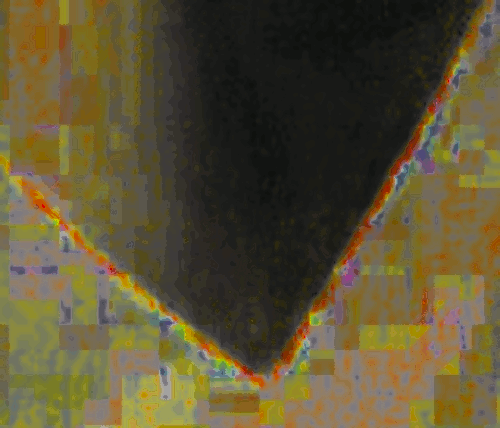
Sumerian King Lists |
- Oannes is identified with U-An (Uanna), the first of seven
pre-flood sages each associated with a succession of kings
documented
in the Sumerian King Lists.
- These fish-like beings and
'manifestations' of the primordial watery abyss (Absu), 'sent by Ea,'
the god of wisdom who ruled over the primordial ocean.
- The text consisted of list of seven kings and their associated sages, followed by a note on the 'Deluge'
which is the Gilgamesh flood myth, followed by eight more king/sage pairs.
|
In several contexts the Apkallu are seven demigods, sometimes described as part man and part fish or bird, associated with human wisdom; these creatures are often referred to in scholarly literature as the Seven Sages.
(Wikipedia)
|

Persia |
-
Berossus' Babylonian history recounts ten kings before a deluge, followed by the reigns of later kings, with a record or myth of prehistoric man receiving civilization via the Oannes.
- Berossus' history contains convincing matches with ancient cuneiform texts.
- This suggests that he was recreating accounts known from ancient Mesopotamian texts.
- Oannes is paired with the king Alorus, and by comparison can be considered equivalent to Adapa
(Uanna).
|
Many figures of Oannes, resembling that of a Triton, having the upper part of a man and the lower of a fish, or as a man covered with a fish's body, have been found in the sculptures of Kuyunjik and Khorsabad, as well as on many cylinders and gems. (biblicalcyclopedia.com)
|

Washed by the waters |
- At that time, many different tribes existed in Babylon, they lived in a barbaric way, like animals in the field.
- Oannes appeared on the coast washed by the waters of Eritrea, on the border with Babylon.
- In the Bible, the archangel Raphael, who accompanied the prophet Tobias, behaved in the same way.
|
Sumerian civilization is depicted by the descendants of the Sumerians themselves to be of non-human origin.
(Vicky Verma)
|

Sumerian city states |
-
When the first Sumerian city states were founded, they were governed by administrators
who were elected by citizens.
- These administrators were obliged to obey traditional
oral laws to which the citizens were subjected.
- After a
time, Mesopotamian city administrators began to enact various
laws which the kings would not obey.
|
The god Marduk, the sage among gods, offered me as a present vast understanding and profound intelligence. The god Nabu, scribe of the universe, gave me as a gift the precepts of wisdom. The gods Ninurta and Nergal endowed my body with heroic power and physical strength without equal. I studied the art of the sage Adapa, the hidden knowledge of the entire art of the scribe. I know the ominous signs of heaven and earth. I can discuss them in the assembly of scholars. I am able to debate the series “If the liver is the reflection of heaven” with the expert diviners. I can solve the complicated divisions and multiplications that have no solution. I have read complex texts, the Sumerian version of which is encrypted, and the Akkadian version, difficult to clarify. I have examined inscriptions on stone from before the flood, whose meaning is hidden, obscure, and murky.
(Ashurbanipal)
|
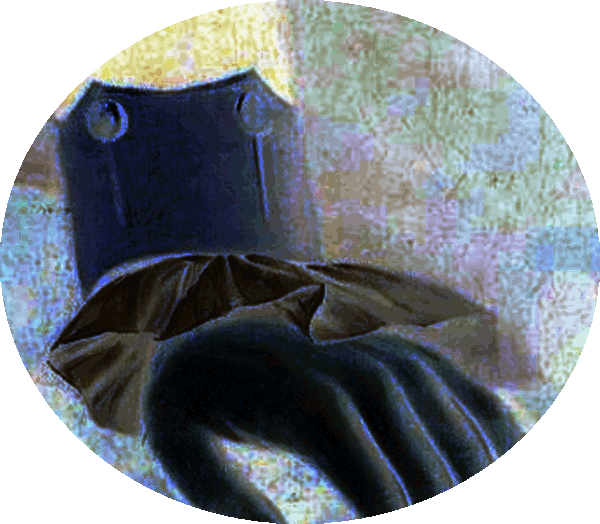
Heavy hand begins |
- In other words, laws were enacted by kings for the citizens
and the kings thereby separated themselves from the citizens.
- This could only be achieved by making the claim that the king was the first authority to decide in any matter.
- Oannes explained the way in which laws would be brought together as a necessity for the existence of a social community.
- Laws were listed in Mesopotamian societies for the first time as a requirement of a civilized life.
|
Mesopotamian laws mainly consisted a list of potential punishments for crimes which had not been committed yet. In this respect, their main goal was to turn the society into a civilization.
(Ercüment Yıldırım)
|
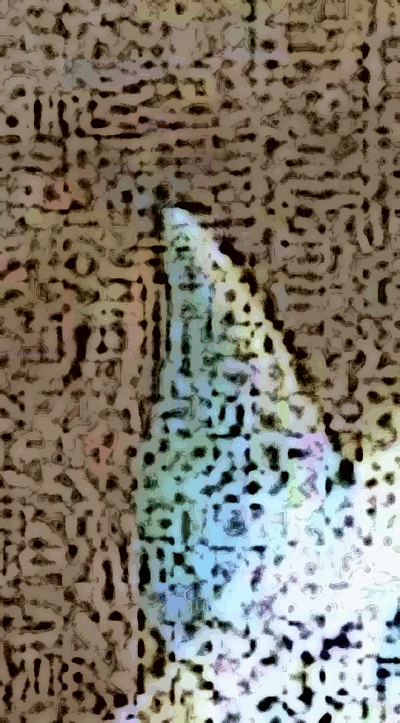
Goats head |
- The Oannes text refers to gods as the source of knowledge, indicating the inferior status of humans before their gods.
- Additionally, it also provided members of the clergy with a
contrived social superiority because they supposedly possessed divine knowledge.
- State formation in Mesopotamian societies gave the kings the
bravado to claim that they were closer to the gods compared to
the citizens.
- They also claimed that gods gave them knowledge unfamiliar to
'ordinary' people and thus, they avoided facing revolts and accountability before the citizens.
|
Another intriguing detail in Oannes narrative is the existence of a law sent by gods. All laws were given kings by gods in Mesopotamian societies. Thus, it is not surprising that Oannes made a law with the order of gods in order to regulate humans' lives.
(Ercüment Yıldırım)
|
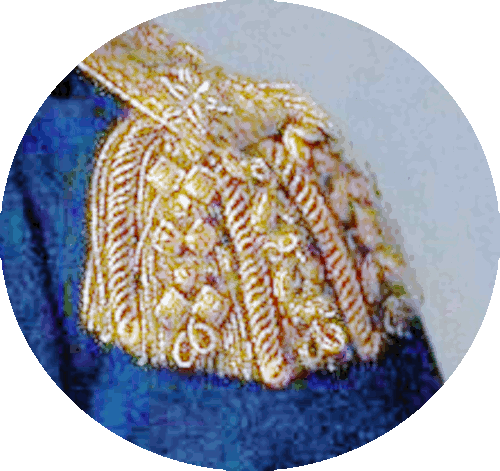
General's
version of flair |
- The same as Ancient Greece, despotic administrators claimed to have spoken on behalf of gods
and they were backed up by the texts which stated that knowledge was given by gods.
- Therefore, by that decree, administrators were able to give
orders to the citizens.
|
Sit down and shut up.
(Gov. Chris Christie)
|
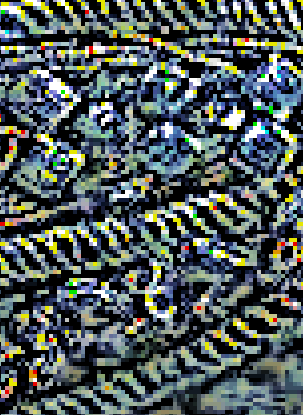
Written word |
- Another striking bit of knowledge imparted in the Oannes
story is the fact that only a certain part of divine knowledge was given to humans.
- Members of the clergy in both Greek and Mesopotamian societies persuaded humans about the impossibility of understanding divine knowledge completely.
- Therefore, humans who thought that they possessed insufficient knowledge obeyed the orders of gods.
- It seems reasonable that Oannes narrative was written to
force people to obey the orders of gods.
|
Knowledge in Mesopotamia was given as a favor of god for humans, whereas, in Ancient Greece, Prometheus created humankind to take revenge from Zeus and gave them knowledge for their lives as a society. Therefore, unlike Ancient Greece, the battle of gods was not intervened by humans in Mesopotamia. Nevertheless, knowledge aimed to explain humans how to survive in their daily lives in both societies. Wisdom, on the other hand, reached clergy and kings, who were considered as special people chosen by gods.
(Ercüment Yıldırım)
|
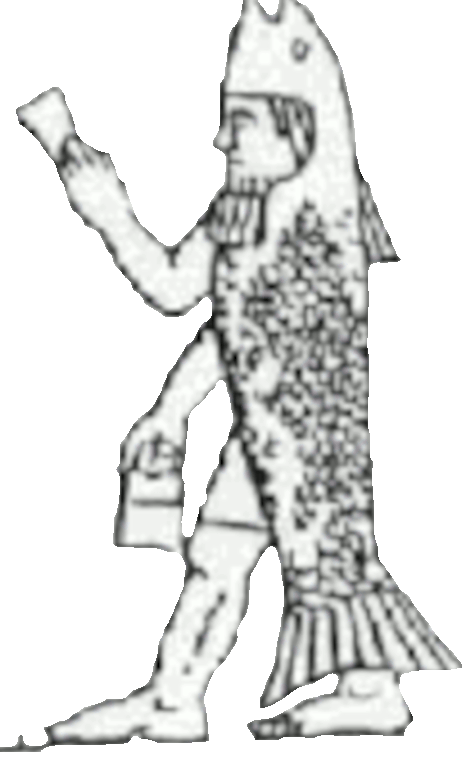
Oannes in costume |
- Oannes has classified as possibly a type of mythological merman/mermaid.
- He was also known as Adapa and Uanna, and was a
Babylonian god from the 4th-century BC.
- Adapa
may simply be a title that means 'wise;' although it is known
that Ea Enki had a
son named Adapa.
-
Uanna stood for one 'who finished the plans for heaven and
earth.'
|
Oannes did not necessarily look like how we might
picture a merman. Some artwork shows him to have a
human torso and fish tail, but other materials
(including carvings) show a human body with arms, legs
and feet surrounded by the form of a fish. You could
almost say it looked like a giant fish ‘costume.’
(mermaidsofearth.com)
|
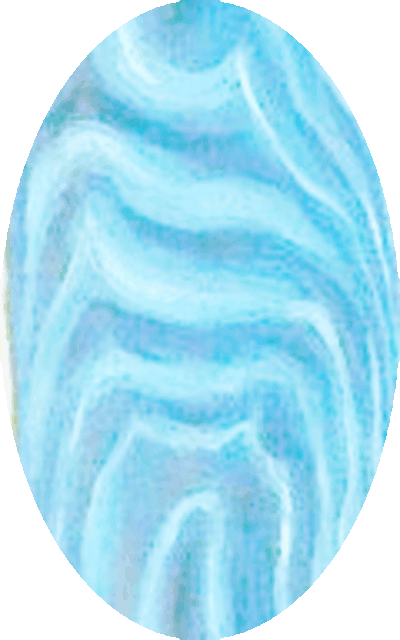
Form of a fish in a
man |
- Oannes was described by the Babylonian priest Berosus as
having the form of a fish.
- He had the head of a man under his fish head and under his fish tail
he had the feet of a man.
- Oannes came to civilize
humanity right after the flood.
- It was very common to
bury small figurines of the Oannes or Apkallu deities as sacred
dedications beneath the foundations of buildings of religious
importance.
|
At first they led a somewhat wretched existence and lived without rule after the manner of beasts. But, in the first year after the flood appeared an animal endowed with human reason, named Oannes, who rose from out of the Erythian Sea, at the point where it borders Babylonia.
(I.P. Cory, Ancient Fragments)
|

Appearing out of the
ocean |
- It was said Oannes appeared out of the ocean every
morning as a fish-human creature to share his wisdom with the
people along the Persian Gulf.
- Oannes would plunge
beneath the sea when the sun became too hot during the day.
|
These beings were described as repulsive and
considered an abomination due to their half-man,
half-fish appearance.
(curioustuff.com)
|

Agriculture |
- He instructed mankind in writing, the arts,
agriculture and the sciences.
- According to the legend, Oannes instructed
man how to build cities, to found temples, to compile laws, to survey the lands, and how to grow food.
- He also taught them mathematics, the sciences, and every kind of art.
|
He had a human voice, and an image of him is preserved unto this day. He passed the day in the midst of men without taking food; he taught them the use of letters, sciences and arts of all kinds. He taught them to construct cities, to found temples, to compile laws, and explained to them the principles of geometrical knowledge.
(I.P. Cory, Ancient Fragments)
|
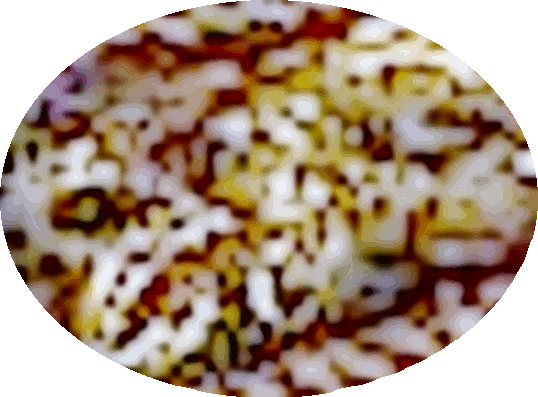
Seeds of the earth |
- Oannes made them distinguish the seeds of the earth, and showed
mankind how to collect the fruits.
- Several representations of these intelligent beings are preserved in ancient Babylonian art and cylinder-seals.
|
The head of the fish formed a mitre above that of the man, while it's scaly, fan-like tail fell as a cloak behind, leaving the human limbs and feet exposed. (Austen Henry Layard)
|
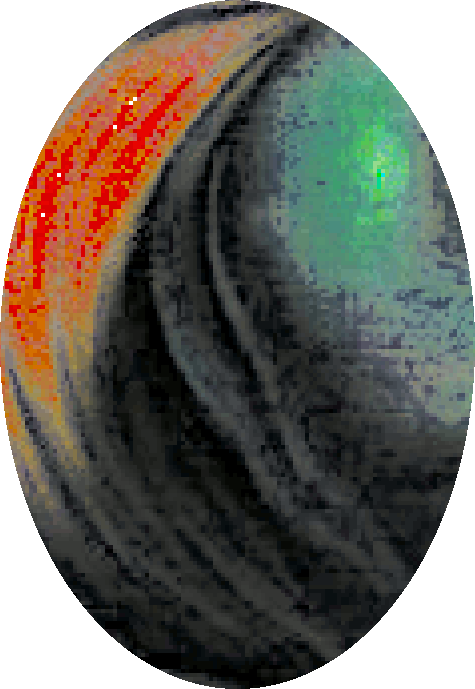
Returning to sea at
sunset |
- In short, Oannes instructed them in everything which could
civilize human culture and humanize their laws.
- Oannes upon completing his task, returned to the watery abyss.
|
From that time nothing material has been added by way of improvement to his instructions. And when the sun set, this being Oannes, retired again into the sea, for he was amphibious.
(I.P. Cory, Ancient Fragments)
|

Animalistic qualities |
- Oannes concerns the blending of both human and animal into a single hybrid figure that combines elements of both.
- By taking a traditional Apkallu (Sage), who is both a fish from the primordial sea, and a human, an essential culture hero responsible for law, language and order, Berossus
created a figure whose animality underscored his status.
- Thus was it in the East, at least five hundred years
before the Christian era.
|
Emphatically not-Greek, by nature not-man, Oannes’
animal qualities connect him to the very waters from
which we come, powerfully authenticating his authority
in a way that is at odds with the clear separation of
titanic, primordial forces and Olympian divinity in
the traditional (Hesiodic) pantheon. Berossus goes
further: his culture hero, whose deeds are described
in Greek, is presented as responsible for the sum
total of all human culture. All subsequent
developments are presented as exegesis on the founder
heroic deeds.
(Jeremy McInerney)
|
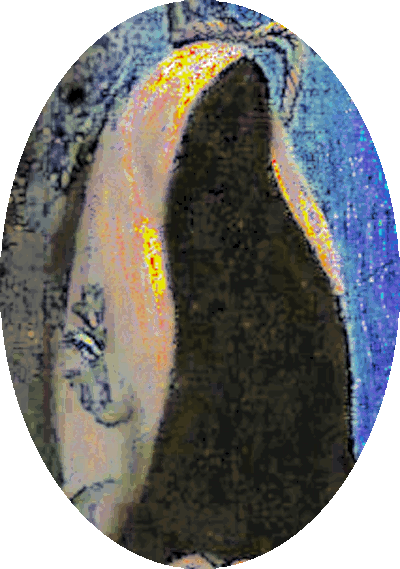
Egyptian influence |
- Many times, Oannes was also depicted wearing an Egyptian style headdress in the form of a fish, rather than
as half-human, half-fish.
- Similarly in Ancient Egypt, Osiris is responsible for all development.
|
Unlearn and Re-think EVERYTHING you were taught! (Kathleen Neuen)
|
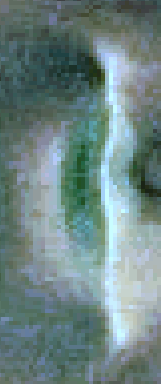
Egyptian Atum |
- The Egyptians had a version of their
creation myths in which the self-begotten Atum, the elder god
of the sun priests of Heliopolis, emerged from the waters of
chaos on the 'primeval island.'
|
One of the Genii of the Egyptian Pantheon appears under a human form, with the head of this fish
(Siluris).
(Wilkinson)
|
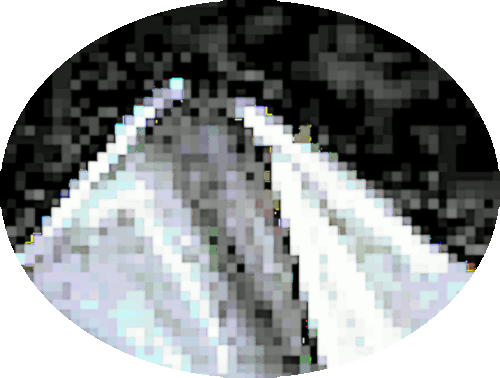
Egyptian primeval
island |
- The concept of the magical island was a powerful one for the Egyptians; the primeval island was also often thought of as a mountain or hill rising out of the waters.
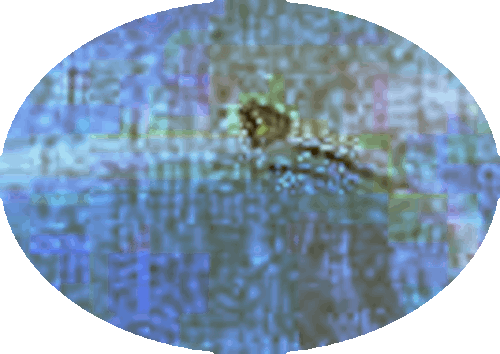
Intriguing
characters |
- The creator of the Mayan civilization was supposed to be the mysterious Kukulkan.
- In other cultures, we also find accounts of intriguing characters such as Tangaroa
and Nammu, etc.
- All these creatures were distinguished
by great knowledge and came to people from different planes or
dimensions or worlds.

Viracocha |
- Tales of divine teachers have been handed down by almost all ancient cultures.
- The Incas spoke of a mysterious creature called Viracocha
and the Persians described a god known as Ahura Mazda, who brought the knowledge.
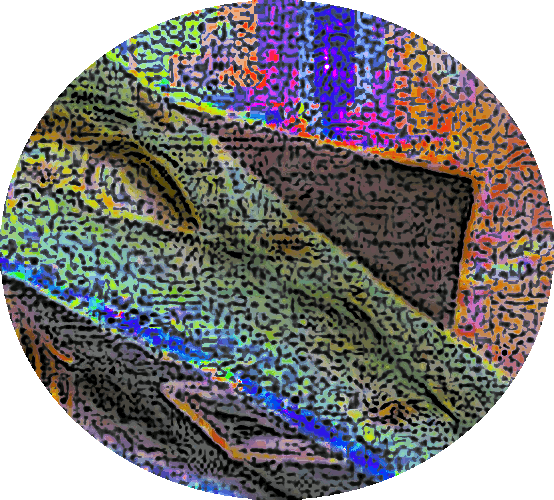
Varuna crocodile |
- Varuna is the water god of Vedism and in Hindu mythology is almost identical to Oannes.
- Associated with both the sky and water.
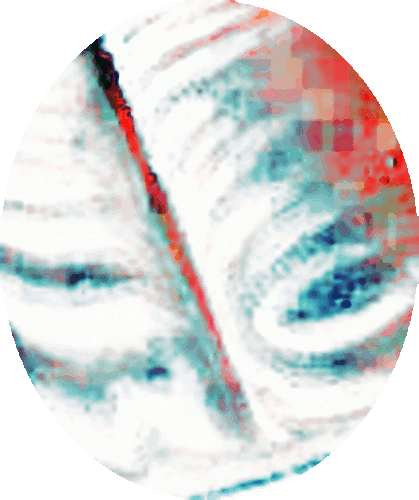
Bep Kororoti |
- The Kayapo Indian tribe lives in the Amazon jungle, tell stories about a creature called Bep Kororoti.
- Bep Kororoti was a divine teacher who did not eat or drink anything and was dressed in something that resembles an astronaut’s spacesuit.
- The Kayapo Indians never had contact with the Sumerians, but the description of the mysterious sage is remarkably similar.

Dagon agriculture
god |
- Dagon (Dagan/Dogon) was a Mesopotamian and Canaanite fish-like deity, associated with clouds,
crops and fertility.
- He was worshiped in ancient Syria across the middle of the Euphrates.
- The fish symbol can be found in ancient Chinese, Indian, Egyptian, Greek, Roman and Scandinavian religions.
|
In his groundbreaking book, The Sirius Mystery, Robert Temple presents convincing arguments for his thesis that the inexplicable understanding of the invisible star Sirius B (and its 50-year orbit) and other astronomical truths by the Dogon people of Mali may have originated from extraterrestrial amphibious beings who imparted their knowledge to the Sumerians and Egyptians, or their predecessors. (starmythworld.com)
|

Dagon principal
deity |
- Dagon was the principal deity of the Philistines, whose ancestors migrated to Palestinian shores from Crete
and were called the Minoans.
- He also figured prominently in the Philistine concepts of death and the afterlife.
- Over time, Canaanite peoples
who came from the Minoan shifted their focus from worship of the 'Great Mother' to
the Canaanite deity Dagon.
|
Oannes is supposed to have symbolized the conquest of Babylonia by a more civilized nation coming in ships to the mouth of the Euphrates; but he is apparently a water-god, resembling in character the Phoenician Dagon and the Greek Proteus and Triton. (biblicalcyclopedia.com)
|

Dagan
father of gods |
- In Mesopotamia, Dagan was equated with Enlil due to their
shared role as 'fathers of gods.'
- Usually represented by
the identical symbology and artwork as Oannes.
- The Dogon
peoples believed they were descended from ancestors taught by creatures sharing the same amphibious and unworldly description.

Your Holiness |
- He was considered to be infallible, and was addressed as ‘Your Holiness.’
- Nations subdued by Babylon had to kiss the ring and slipper of the Babylonian god-king.
- The same powers and the same titles are claimed to this day by the Dalai Lama of Buddhism, and the Pope.
- The worship of Dagon also affected people’s eating habits over the years
and explains why the Catholics abstain from eating fish on all days except Fridays.
|
And it shall come to pass in the day of the Lord's sacrifice, that I will punish the princes, and the king's children, and all such as are clothed with strange apparel. In the same day also will I punish all those that leap on the threshold, which fill their masters' houses with violence and deceit. (Zephaniah 1:8)
|
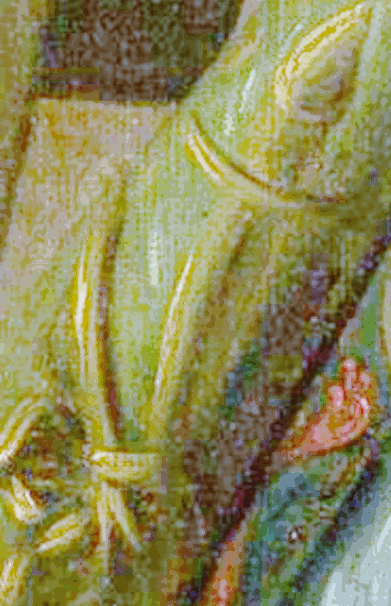
Dagon
at the Vatican |
- In the heraldic symbology of the Vatican, Dagon is crowned
and there are Vatican keys (3-trinity) 3 arched fish (trinity)
and a black cross.
- Vesica Piscis consists of 2 circles
conjoined to form a fish shape.
- Age of Pisces, 2160 years
beginning with Christ's birth, age of the formal church which has
long maligned the true teachings of Christ.
|
666 is the length of a vesica, whose width is 384, or the sun’s radius measured by the tone. If the Greek numerals from one to ten be arranged so as to correspond to the cabalistic steps and their numerical
values computed, we find that EIS 215, DUO, 474. TREIS, 615, yield 1,304, which is one less than the length of a vesica which will contain a circle having a circumference of 2,368, and this triad represents the three steps of the Macrocosm. (William
Stirling, The Canonan Exposition of the Pagan Mystery
in the Cabala)
|
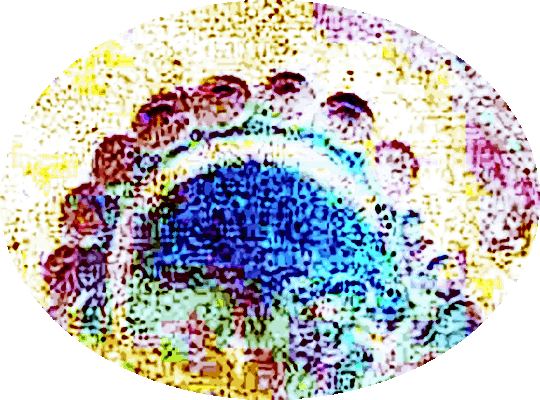
Big O
Baptism |
- The story of Oannes has many similarities with the story of John the Baptist
who was widely known for his practice of Baptism to wash away all sins.
-
John’s name in Greek is Ioannes, while in Hebrew John becomes Yowchanan from ‘Yhowchanan’
which means 'Jehovah Favored.'
- John the Baptist is
usually depicted near a body of water like Oannes.
|
The purpose of life is experience, expression and
evolution.
(Karen Bell)
|
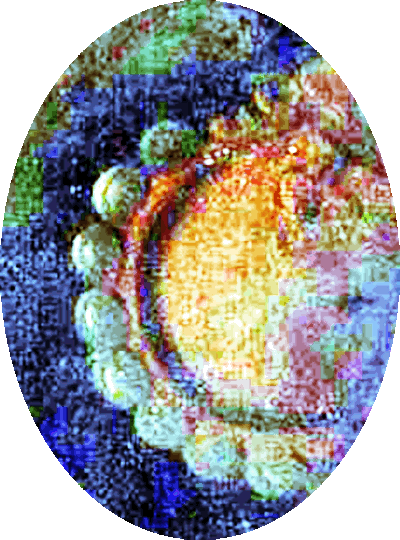
Getting the gears
moving |
-
Aside from having similar names, the respective roles of John
(Ioannes) and Oannes are to an extent inverted.
- John baptises others, while Oannes ‘baptises’ himself, emerging and submerging from the ocean.
- Oannes brings culture to others while John denies himself the benefits of culture
and lives in the wilderness.
- These reversals are certainly intriguing and show they
both represent opposing astrological signs (winter and summer).
|
I will send my messenger ahead of you,
who will prepare your way— a voice of one calling in the wilderness,
‘Prepare the way for the Lord,
make straight paths for him.'
(Mark 1-3)
|
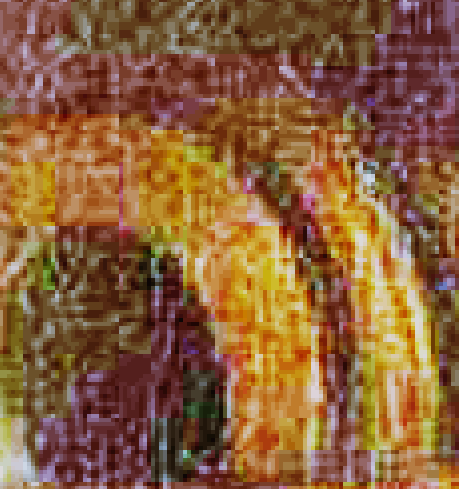
Capricorn goat |
- Joseph Campbell traced the baptismal rite of John the
Baptist back to the Sumerian temple of Ea in Eridu known as 'God of the House of Water,’ whose symbol is the tenth sign of the Zodiac
which is Capricorn.
- Capricorn is a composite beast with the front of a goat and the body of a fish, which is the sign into which the sun enters at the winter solstice for rebirth
and is associated with the water-dwelling god of wisdom
Sumerian Ea Enki.
- Several scholars have suggested, therefore, that there was
never either John or Jesus but that is not true.
|
A water-god and a sun-god.
(Occidental Mythology)
|

Midsummer |
- The birth of John the Baptist is celebrated at Midsummer
on June 23, and corresponds with the constellation of Capricornus, the Greek Zodiacal sign identified with the Mesopotamian constellation suhurmasu (goat-fish).
|
And Jesus said to them, "Follow me, and I will make you become fishers of men." (Mark 1:17)
|

Midwinter |
- Midwinter heralds the nativity of Jesus and is the time when the sun enters Capricorn and is subsequently re-born.
- Therefore, at Midsummer, the sun gives way to Capricorn
so essentually, the year is divided equally between John and Jesus who are born six months apart.
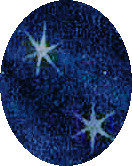
Shining stars |
- Virgin Mary conceived six months after John’s mother Elizabeth,
so mythically and cyclicly, the birth of one implies death for the other.
- The corresponding birth-dates of John and Jesus with the solstices
appear in Christian tradition much later than the Gospel
accounts.
|
And, behold, there was a man in Jerusalem, whose name was Simeon; and the same man was just and devout, waiting for the consolation of Israel: and the Holy Ghost was upon him.
And it was revealed unto him by the Holy Ghost, that he should not see death, before he had seen the Lord's Christ.
(Luke 2:24-31)
|
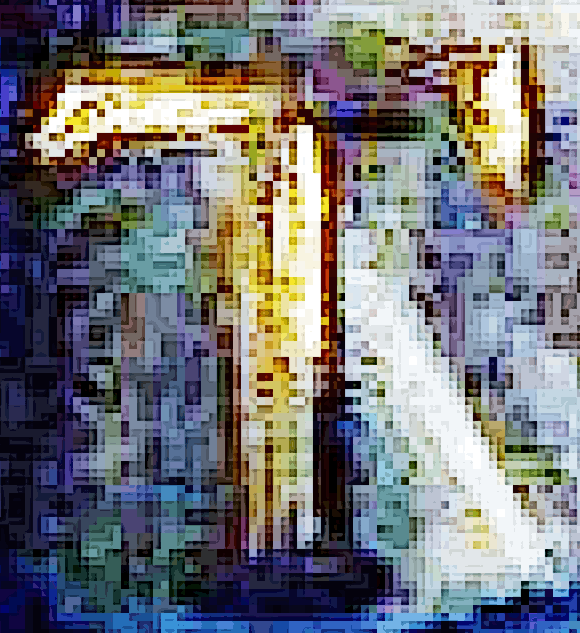
Testament |
- New Testament historians recognize that tension existed between the ministries of both Jesus and John, later threatening to undermine Jesus’ prominence over John.
- If the Gospel accounts are fictitious then such tension would be difficult to explain
and why would Jesus need to be baptised by John?
- This was also a problem for early Christians
because symbolically John’s baptism was for sinners; so, if
Jesus wasn’t actually baptised it wouldn’t make much sense to
invent it.
- An easy explanation as they each represent
different seasons or time periods.
|
Despite these mythic associations, the scholarly consensus is that both Jesus and John were historical figures.
(Lugh Dubthach)
|
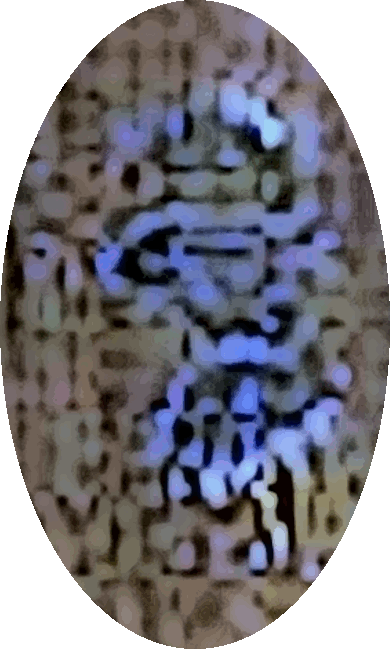
Nimrod, Mighty Hunter and King |
-
Enki was the patron god of the city of Eridu, the City of Eridu was founded by Nimrod.
- The pagan worship of Saturn was the name originally given to the Babylonian Ruler (Nimrod), who was known as the god of Chaldean Mysteries.
- The word devil is translated as Satyr and pronounced in a manner that even sounds like Saturn.
- Nimrod of the Philistines in the Bible.
- John the Baptist roots trace back to the Sumerian temple of
Ea in Eridu known as 'God of the House of Water.'
- John
the Baptist was married to Mary Magdalene and she was left a
widow.
|
According to Egyptian mythology, when the judges in power found Osiris (originally Nimrod) guilty of corrupting the religion of Adam (“Atum,” who was Egypt’s sky-god), they cut up his body, then threw the parts into the Nile. It was said that a fish ate his reproductive organ and became transformed into Dagon.
(Kathleen Neuen)
|
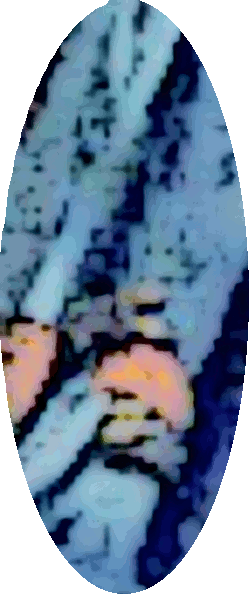
Freemasonry |
- Nimrod figures in some very early versions of the history of Freemasonry, where he was said to have been one of the fraternity's founders.
-
John the Baptist is the patron saint of the Freemasons.
- Priests in
fish robes were still prevalent long after Sumerian
culture no longer was extant; such as witnessed on reliefs
discovered in Assyria dating from 700 BC.
|
Enki is just another form of Nimrod, son of Cush, grandson of Ham, and great-grandson of Noah; and as "a mighty one on the earth" and "a mighty hunter before God". This is repeated in First Book of Chronicles and the "Land of Nimrod", used as a synonym for Assyria, is mentioned in the Book of Micah.
(mysterybabylon-watch)
|
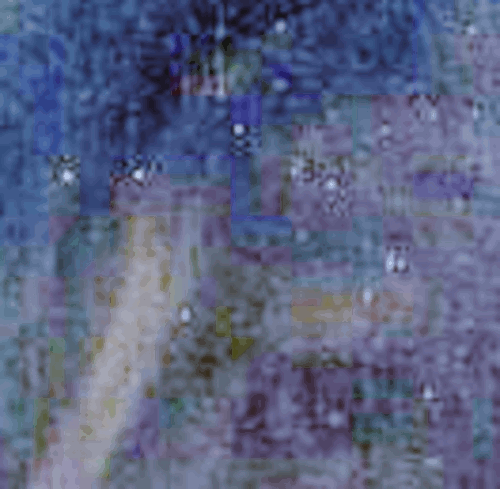
Mare means priest |
- Mare means priest, such as
Mare Magdalene high priestess of the tower in Babylon, however, she's
been defamed and now 'mare' seems to mean nightmare, monster
or incubus.
- Like what's happened to everything 'feminine'
on this Earth and now the 'males' parade around in female
disquise and none of us are supposed to notice.
|
According to the Encyclopedia of Freemasonry: The legend of the Craft in the Old Constitutions refers to Nimrod as one of the founders of Masonry. Thus in the York MS., No. 1, we read: "At ye making of ye toure of Babell there was a Masonrie first much esteemed of, and the King of Babilon yt called Nimrod was a Mason himself and loved well Masons." However, he does not figure in the current rituals.
(mysterybabylon-watch)
|
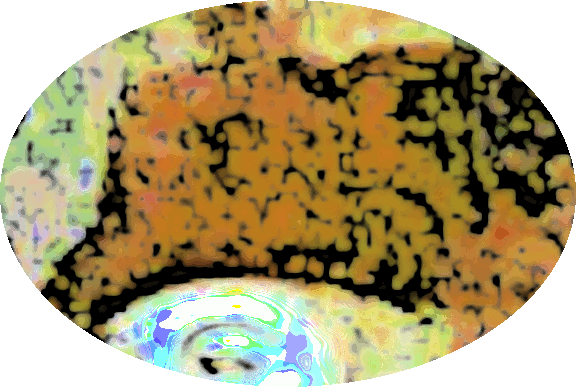
Freemason party boy |
- Now the
perverts are working on changing our fake lanquage again to
de-gender everything.
- Mare (Maria plural) is also a large, dark plain, which may have the appearance of a sea, such as those on the Moon.
|
If we look closely we can see how "masonry conceals her secrets
from those not yet ready to receive them" for by reversing the order of
the letters we find the name of the Supreme Architect of the Universe.
(ks-mason.org/wsb.htm)
|
- They changed god to dog? How cute (puke). They think we're
really stupid like them.

Pope look |
- Something Fishy About the Pope´s Hat.
- The two-horned mitre, which the Pope wears is the same
mitre worn by Dagon and the excavations of Nineveh have put this beyond all possibility of doubt.
- When the Pope sits on the high altar at Rome and receives the adoration of the Cardinals, is the very mitre worn by Dagon
who is the fish-god of the Philistines and Babylonians.
|
In the West, at a later period, we have evidence that the Pagans had detached the fish-head mitre from the body of the fish, and used that mitre alone to adorn the head of the great Mediatorial god; for on several Maltese Pagan coins that god, with the well-known attributes of Osiris, is represented with nothing of the fish save the mitre on his head; very nearly in the same form as the mitre of the Pope, or of a Papal bishop at this day.
(Kathleen Neuen)
|
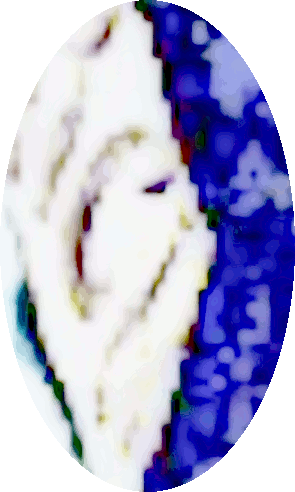
The Big Fish |
- The mitre is based on a Greek headpiece called a camelaucum and has been used since the 11th-century.
- The Papal mitre, of Roman origin, is entirely different from the mitre of Aaron and the Jewish high priests
as their mitre was a turban.
- Mitres are worn in the Catholic Church, Eastern Orthodox Church, Oriental Orthodox Churches, the Anglican Communion
and some Lutheran churches
- In China, the Chinese Emperor had the same practice of wearing the fish-head mitre.
- The Pope also wears a
'Ring of the Fisherman' and is mocking
Mark 1:17.
|
About the very time when the Bishop of Rome was
invested with the pagan title of Pontifex, the Saviour
began to be called ICHTHUS, of 'THE FISH', thereby
identifying him with DAGON." (Hislop, p. 215)
|
 |
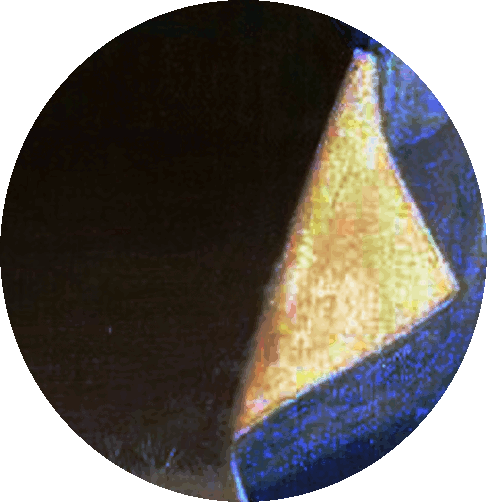 |
|
Janus |
- The Pope bears the key of Janus (January), the god of beginnings, gates, and doorways.
- In January we look back on the last year and forward to the next.
- Janus represented time because he could see into the past with one face and into the future with the other.
- Janus presided over the beginning and ending of conflict, and hence war and peace.
- The doors of his temple were open in time of war, and closed to mark the peace.
|
As the god of transitions and dualities, Janus is portrayed with two faces—one facing the past, and one facing the future. He also holds a key in his right hand, which symbolizes his protection of doors, gates, thresholds, and other separations or openings between spatial boundaries.
(Anderson Lock)
|
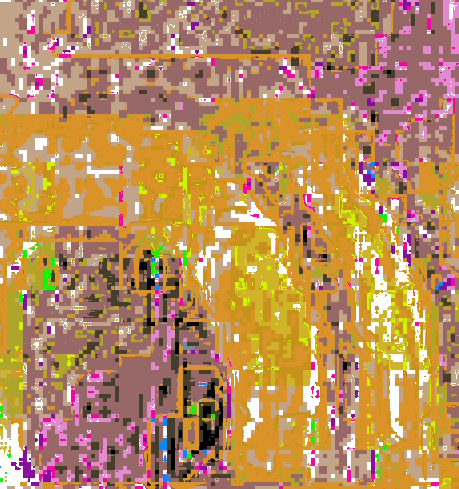
Wheels and bridges |
- As a god of transitions, Janus was remembered at births, and journeys.
- Janus must be invocated before rituals to create a 'bridge' between the human and the divine worlds.
- The name has been used as a Latinization of Jan or Johannes
which comes from Denmark.
- In Roman mythology, Janus held the key to Heaven,
however, he was around long before Rome.
|
According to Cicero and Macrobius, Janus is the twin brother of Jana (Diana). Janus is the Sun while Diana is the Moon. Janus and Diana are equivalent to Apollo and Artemis in Greece. In myths the Sun-god is usually a twin. Consider twins Utu & Innana, Apollo & Artemis, Sol & Mani, Freyr & Freyja. There’s also triplets Helios & Eos & Selene and Amaterasu & Tsukuyomi & Susanoo. The Sun-god’s twin is generally a female and might be associated with either the Dawn or the Moon.
(Giuseppe P. Grieco)
|
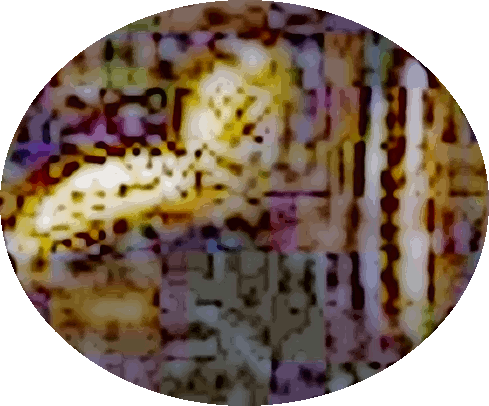
Door latch |
- The idea of doorways is fundamental in Judaism and in Ancient Egypt.
- Every Jewish doorway is supposed to have a mezuzah containing words that refer to the v’havtah, the statement that one should bind the words of God to your eyes, to your gates, to your door posts, etc.
- In ancient Egypt a typical tomb passes through doorways that are specifically decorated and inscribed with words that identify the person so they can pass through into the other dimensions.
|
Janus represents a de-gendering, one that fits with Rome. The she-wolf suckled two boys. The myth could have been a male and a female and thus been a creation myth, but it isolates Remus and replaces the female with later myths about how the Romans obtained women (like the Sabine women which becomes sobbing women in 7 Brides for 7 Brothers). So the connection to Greek mythology is more in hermaphroditic images and other conceptions where male and female come together, except isolated into the male side because all these myths tell stories from the dominant male perspective.
(Jonathan Kurtzman)
|

She-wolf story |
-
Janus helps Romulus abduct the women, which is a link back to the female part hidden in the she-wolf story as it transitioned from creation story to foundation story.
- These stories express the male perspective
of the myths concerning elements of creation and of continuing life;
and pretty much every story reduces the woman’s role in
everything.
- Often versions arise in which the woman has a particular, often sad fate, because the male character goes on, sometimes to other great deeds.
- We already found poor Ariadne abandoned in Antarctica,
Theseus left her behind and took all the glory.
|
That larger story entangles and all we see is one ‘hand’, when you think of hands as sides or views. Perhaps my favorite example is Ariadne and Theseus: she largely disappears from the story, and is disposed of in not nice ways in later versions, but she guides Theseus not only by a thread but by such a deep connection that he gives himself to her complete control so he can act in the moment to highest possible extent he as a man can because nothing less can survive against the Minotaur. But if you entangle them, you share the heroic acts across this mixture, which you can see if you think of Janus as male and female but which disappears if Janus is male.
(Jonathan Kurtzman) |
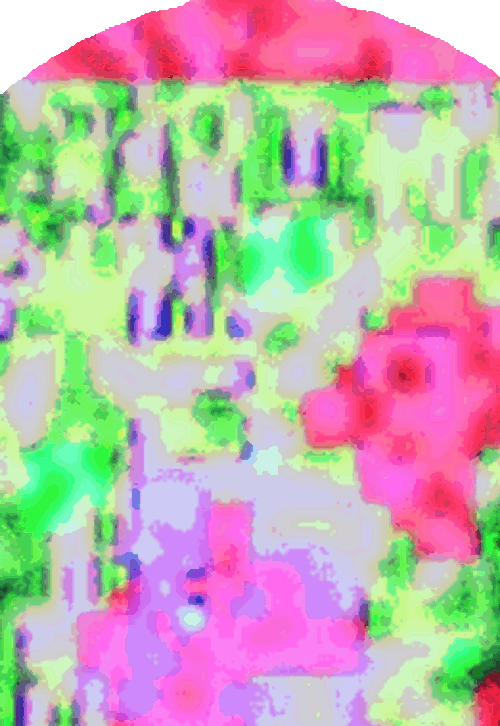
Dionysus dome |
- Dionysus embodies a Janus dual gendering as well as the gateway concept: music, drink, festivity, etc. all take you out of yourself.
- We are all part male and part female which is Yin and
Yang.
-
Because we’ve almost entirely only developed the male perspectives, we have tended to see differences as aberrations because the storylines don’t fit that perspective.
|
Exploring these concepts in terms of gender
identity generally: you can see in the ancient
conceptions the varieties of attractions and
identifications that people have without labeling them
abnormal. (Jonathan Kurtzman) |
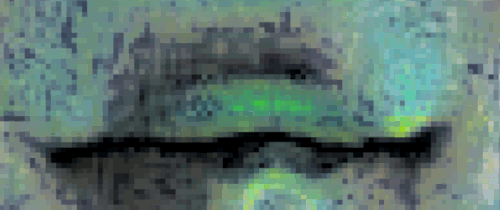
Janus becomes a male
cave dweller |
-
These complications have historically reduced to a male perspective, telling (repeatedly) the male stories - like how many Batman origin stories do we need?
- All the while, ignoring the other stories that have always existed but which have not been seen because they’re hidden on the ‘dark side’ away from where we’ve flashed the mental light.
- Janus be seen as
a fusion between a Sun-god (Janus, Quirinus, Apollo) and his twin sister (Diana), resulting in an entity with two faces looking in opposite directions.
- Through time, the formerly androgynous Janus became all male
and connections with the Sun and the Moon were ignored.
-
As a result, Diana was no longer seen as Janus’ twin, but as
the Greek Apollo’s twin.
|
The Temple of Janus in Rome was known for its large, ornate doors called the 'Gates of Janus.'
These doors would be open while Rome was at war and would be closed whenever Rome was at peace. This has to do with Janus presiding over beginnings and endings, especially the beginning and end of conflicts.
For a leader, it was a significant achievement to say that he was able to close the gates, and Augustus claimed to have done it an unprecedented three times. (Tom McMahon)
|
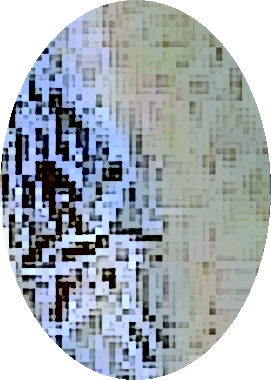
Lord of the Flies |
- The Vatican took the left path, masculine (lower ego),
and dumped goddess Diana by the side of the road.
- She's
laying over there with Mary Magdalene, who represents the
missing right path (feminine), the so-called 'prostitute' who
will be married with the left path and joined into One.
- YHWH
(Enki) divorced Ashurah, threw her out and defiled her.
-
Freemasonry did the same thing.
|
It would have been better for them not to have known the way of righteousness, than to have known it and then to turn their backs on the sacred command that was passed on to them. Of them the proverbs are true: “A dog returns to its vomit,” and, “A sow that is washed returns to her wallowing in the mud.”
(2 Peter 2:21)
|

Road less traveled |
- Jesus ran out of wine
because it was not his time yet, but it's coming in the Age of
Aquarius when the man will meet you carrying a pitcher of water.
- And he will wait on your table instead of the woman.
|
On the third day there was a wedding at Cana in Galilee, and the mother of Jesus was there. Jesus also was invited to the wedding with his disciples. When the wine ran out, the mother of Jesus said to him, “They have no wine.” And Jesus said to her, “Woman, what does this have to do with me? My hour has not yet come.”
His mother said to the servants, “Do whatever he tells
you.”
(John 2:1-5)
|
Moral of the story!
- Amazing how the Oannes showed up to 'help' right after
they destroyed everything.
- You know, the same crowd who burned everything
down and then promised to rebuild it and then stole
everything instead.
|
|
|
Human happiness and moral duty are inseparably connected.
George Washington

|

